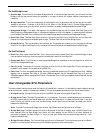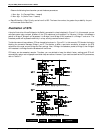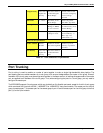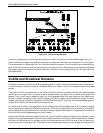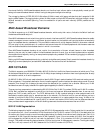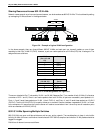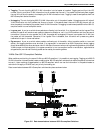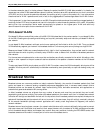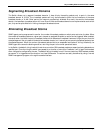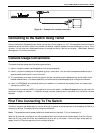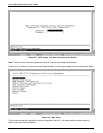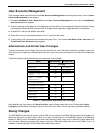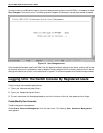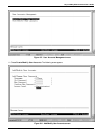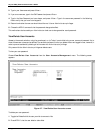
24-port NWay Ethernet Switch User’s Guide
26 Switch Management Concepts
Segmenting Broadcast Domains
The Switch allows you to segment broadcast domains. It does this by forwarding packets only to ports in the same
broadcast domain or VLAN. Thus, broadcast packets will only be forwarded to ports that are members of the same
broadcast domain or VLAN. Other parts of the network are effectively shielded. As a result, the smaller the broadcast
domain, the less effect a broadcast storm will have. Since VLANs and broadcast domains are implemented at each switch
port, they can be quite effective in limiting the scope of broadcast storms.
Eliminating Broadcast Storms
SNMP agents can be programmed to monitor the number of broadcast packets on switch ports and act on the data. When
the number of broadcast packets on a given port rise past an assigned threshold, an action can be triggered. When enabled,
the usual action is to block the port to broadcast frames, which discards all broadcast frames arriving at the port from the
attached segment. Not only does this isolate the broadcast domain, but it actually starts removing broadcast packets from
the affected segment. When the number of broadcast packets falls to an acceptable level (below a falling threshold), the
SNMP agent can remove the blocking condition, returning the port to its normal operational state.
In the Switch, the default rising threshold is met when more than 500 broadcast packets per second are being detected on a
specified port. Once the rising threshold is surpassed for a duration of more than 5 seconds, it will trigger the broadcast
storm rising action configured by the user. The default falling threshold is met if there are less than 250 broadcast packets
per second. It is triggered once the duration is at least 30 seconds. The actions can easily be defined by using a normal
SNMP management program or through the console interface.



